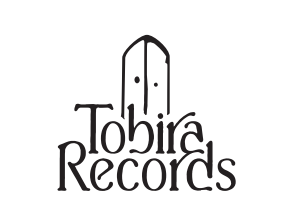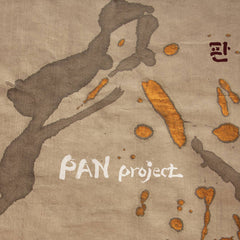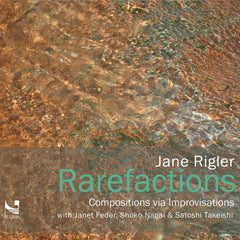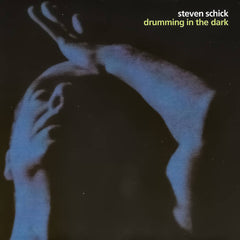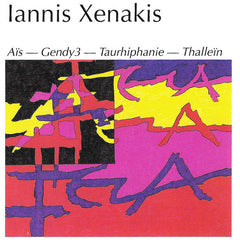クイックビュー
{"id":7062747807909,"title":"PAN Project \/\/ PAN Project CD","handle":"pan-project-pan-project-cd","description":"\u003cp\u003e\u003cspan data-mce-fragment=\"1\"\u003e中国・韓国・日本の伝統楽器を用いて現代音楽に昇華するプロジェクトPAN Projectが2021年9月にリリースしたアルバム。アジアクロスオーバーなトラック10曲を収録。デジパック、シュリンク仕様。12ページのブックレットが付属。\u003c\/span\u003e\u003c\/p\u003e\n\u003ciframe src=\"https:\/\/bandcamp.com\/EmbeddedPlayer\/album=1593254584\/size=large\/bgcol=ffffff\/linkcol=0687f5\/tracklist=false\/artwork=small\/transparent=true\/\" style=\"border: 0; width: 100%; height: 120px;\" seamless=\"\"\u003e\u003c\/iframe\u003e\n\u003cp\u003eレーベルその他作品は\u003ca href=\"https:\/\/tobirarecords.com\/collections\/neuma\" data-mce-href=\"https:\/\/tobirarecords.com\/collections\/neuma\"\u003eこちら\u003c\/a\u003e\u003cspan\u003e \u003c\/span\u003e\/\/\/ Click \u003ca href=\"https:\/\/tobirarecords.com\/collections\/neuma\" data-mce-href=\"https:\/\/tobirarecords.com\/collections\/neuma\"\u003ehere\u003c\/a\u003e to see more Neuma Records releases available at Tobira. \u003c\/p\u003e\n\u003cp\u003e--------------------------------\u003c\/p\u003e\n\u003cp\u003eText by\u003cmeta charset=\"utf-8\"\u003e\u003cspan data-mce-fragment=\"1\"\u003e Neuma Records:\u003c\/span\u003e\u003c\/p\u003e\n\u003cp\u003e\u003cem\u003e\"\u003cmeta charset=\"utf-8\"\u003eIn Greek, ‘Pan’ means ‘everything.’ But in Korean, ‘Pan’ means ‘coming together,’ and that is exactly what the PAN Project Ensemble is about: bringing together many East Asian traditions under one big canopy. Not merely a strip mall restaurant catch-all, this cross-cultural musical experiment brings together stars from Chinese, Korean, and Japanese traditions into a new and exciting blend with deep roots and intertwining tendrils.\u003c\/em\u003e\u003cbr data-mce-fragment=\"1\"\u003e\u003cbr data-mce-fragment=\"1\"\u003e\u003cem\u003eThis Neuma release not only introduces PAN Project as an ensemble, but also shows that what seems new and experimental to modern ears has its origins in the ancient Silk Road era. Take, for instance, the meeting of Chinese guqin and Japanese shakuhachi in the track ‘Yi Gu Ren’. Both instruments connect to meditative practices of a once-foreign Buddhist religion whose traditions developed separately in China and Japan. They now come together in the modern day to be re-explored and reinterpreted. Or the tracks of the musical Korean pansori story-telling suite ‘Sugungga’. Here we have historical and modern intercultural-experimentalism at its most essential: ancient rhythmic cycles of Korean Shaman ritual, the telling of a farcical folk-tale conveying timeless morals through speech and song, and an intercultural blend of Chinese, Japanese, Korean\u003cspan class=\"bcTruncateMore\" data-mce-fragment=\"1\"\u003e and Western instruments expressing the drama through modern free improvisation.\u003cbr data-mce-fragment=\"1\"\u003e\u003cbr data-mce-fragment=\"1\"\u003eImprovisation is indeed an essential element of the experimental process, and also of PAN Project Ensemble’s music. The enduring spirit of spontaneity and experimentation exists in the very core of East Asian traditions; from the spiritually induced spontaneity of the guqin and shakuhachi traditions, to the both sparse and driving rhythms of Korean Shaman ritual, and the spontaneity of the instrumental ritual improvisation called sinawi.\u003cbr data-mce-fragment=\"1\"\u003e\u003cbr data-mce-fragment=\"1\"\u003eThe six members of PAN Project Ensemble – each renowned masters in their own right – are spread across the USA, Canada, and East Asia and bring the full weight of their cultural perspectives to this musical summit. Invest some time in this venture culturalism and you may be surprised how new old is again.\u003c\/span\u003e \"\u003c\/em\u003e\u003c\/p\u003e\n\u003cp\u003eArtist : PAN Project\u003c\/p\u003e\n\u003cp\u003eLabel : \u003cmeta charset=\"utf-8\"\u003e\u003cspan data-mce-fragment=\"1\"\u003eNeuma Records\u003c\/span\u003e\u003c\/p\u003e","published_at":"2021-09-24T17:04:15+09:00","created_at":"2021-09-24T15:48:53+09:00","vendor":"Tobira Records","type":"","tags":["cd","neuma records"],"price":198000,"price_min":198000,"price_max":198000,"available":true,"price_varies":false,"compare_at_price":null,"compare_at_price_min":0,"compare_at_price_max":0,"compare_at_price_varies":false,"variants":[{"id":40868342825125,"title":"Default Title","option1":"Default Title","option2":null,"option3":null,"sku":"","requires_shipping":true,"taxable":true,"featured_image":null,"available":true,"name":"PAN Project \/\/ PAN Project CD","public_title":null,"options":["Default Title"],"price":198000,"weight":90,"compare_at_price":null,"inventory_management":"shopify","barcode":"","requires_selling_plan":false,"selling_plan_allocations":[]}],"images":["\/\/tobirarecords.com\/cdn\/shop\/products\/pr1_2749086f-1af9-4116-9b7b-c11a7f93d7d6.jpg?v=1632466134","\/\/tobirarecords.com\/cdn\/shop\/products\/pr2_39af83e9-58be-47d9-868b-48895891faee.jpg?v=1632466135"],"featured_image":"\/\/tobirarecords.com\/cdn\/shop\/products\/pr1_2749086f-1af9-4116-9b7b-c11a7f93d7d6.jpg?v=1632466134","options":["Title"],"media":[{"alt":null,"id":23819423416485,"position":1,"preview_image":{"aspect_ratio":1.0,"height":700,"width":700,"src":"\/\/tobirarecords.com\/cdn\/shop\/products\/pr1_2749086f-1af9-4116-9b7b-c11a7f93d7d6.jpg?v=1632466134"},"aspect_ratio":1.0,"height":700,"media_type":"image","src":"\/\/tobirarecords.com\/cdn\/shop\/products\/pr1_2749086f-1af9-4116-9b7b-c11a7f93d7d6.jpg?v=1632466134","width":700},{"alt":null,"id":23819423449253,"position":2,"preview_image":{"aspect_ratio":0.75,"height":1200,"width":900,"src":"\/\/tobirarecords.com\/cdn\/shop\/products\/pr2_39af83e9-58be-47d9-868b-48895891faee.jpg?v=1632466135"},"aspect_ratio":0.75,"height":1200,"media_type":"image","src":"\/\/tobirarecords.com\/cdn\/shop\/products\/pr2_39af83e9-58be-47d9-868b-48895891faee.jpg?v=1632466135","width":900}],"requires_selling_plan":false,"selling_plan_groups":[],"content":"\u003cp\u003e\u003cspan data-mce-fragment=\"1\"\u003e中国・韓国・日本の伝統楽器を用いて現代音楽に昇華するプロジェクトPAN Projectが2021年9月にリリースしたアルバム。アジアクロスオーバーなトラック10曲を収録。デジパック、シュリンク仕様。12ページのブックレットが付属。\u003c\/span\u003e\u003c\/p\u003e\n\u003ciframe src=\"https:\/\/bandcamp.com\/EmbeddedPlayer\/album=1593254584\/size=large\/bgcol=ffffff\/linkcol=0687f5\/tracklist=false\/artwork=small\/transparent=true\/\" style=\"border: 0; width: 100%; height: 120px;\" seamless=\"\"\u003e\u003c\/iframe\u003e\n\u003cp\u003eレーベルその他作品は\u003ca href=\"https:\/\/tobirarecords.com\/collections\/neuma\" data-mce-href=\"https:\/\/tobirarecords.com\/collections\/neuma\"\u003eこちら\u003c\/a\u003e\u003cspan\u003e \u003c\/span\u003e\/\/\/ Click \u003ca href=\"https:\/\/tobirarecords.com\/collections\/neuma\" data-mce-href=\"https:\/\/tobirarecords.com\/collections\/neuma\"\u003ehere\u003c\/a\u003e to see more Neuma Records releases available at Tobira. \u003c\/p\u003e\n\u003cp\u003e--------------------------------\u003c\/p\u003e\n\u003cp\u003eText by\u003cmeta charset=\"utf-8\"\u003e\u003cspan data-mce-fragment=\"1\"\u003e Neuma Records:\u003c\/span\u003e\u003c\/p\u003e\n\u003cp\u003e\u003cem\u003e\"\u003cmeta charset=\"utf-8\"\u003eIn Greek, ‘Pan’ means ‘everything.’ But in Korean, ‘Pan’ means ‘coming together,’ and that is exactly what the PAN Project Ensemble is about: bringing together many East Asian traditions under one big canopy. Not merely a strip mall restaurant catch-all, this cross-cultural musical experiment brings together stars from Chinese, Korean, and Japanese traditions into a new and exciting blend with deep roots and intertwining tendrils.\u003c\/em\u003e\u003cbr data-mce-fragment=\"1\"\u003e\u003cbr data-mce-fragment=\"1\"\u003e\u003cem\u003eThis Neuma release not only introduces PAN Project as an ensemble, but also shows that what seems new and experimental to modern ears has its origins in the ancient Silk Road era. Take, for instance, the meeting of Chinese guqin and Japanese shakuhachi in the track ‘Yi Gu Ren’. Both instruments connect to meditative practices of a once-foreign Buddhist religion whose traditions developed separately in China and Japan. They now come together in the modern day to be re-explored and reinterpreted. Or the tracks of the musical Korean pansori story-telling suite ‘Sugungga’. Here we have historical and modern intercultural-experimentalism at its most essential: ancient rhythmic cycles of Korean Shaman ritual, the telling of a farcical folk-tale conveying timeless morals through speech and song, and an intercultural blend of Chinese, Japanese, Korean\u003cspan class=\"bcTruncateMore\" data-mce-fragment=\"1\"\u003e and Western instruments expressing the drama through modern free improvisation.\u003cbr data-mce-fragment=\"1\"\u003e\u003cbr data-mce-fragment=\"1\"\u003eImprovisation is indeed an essential element of the experimental process, and also of PAN Project Ensemble’s music. The enduring spirit of spontaneity and experimentation exists in the very core of East Asian traditions; from the spiritually induced spontaneity of the guqin and shakuhachi traditions, to the both sparse and driving rhythms of Korean Shaman ritual, and the spontaneity of the instrumental ritual improvisation called sinawi.\u003cbr data-mce-fragment=\"1\"\u003e\u003cbr data-mce-fragment=\"1\"\u003eThe six members of PAN Project Ensemble – each renowned masters in their own right – are spread across the USA, Canada, and East Asia and bring the full weight of their cultural perspectives to this musical summit. Invest some time in this venture culturalism and you may be surprised how new old is again.\u003c\/span\u003e \"\u003c\/em\u003e\u003c\/p\u003e\n\u003cp\u003eArtist : PAN Project\u003c\/p\u003e\n\u003cp\u003eLabel : \u003cmeta charset=\"utf-8\"\u003e\u003cspan data-mce-fragment=\"1\"\u003eNeuma Records\u003c\/span\u003e\u003c\/p\u003e"}
